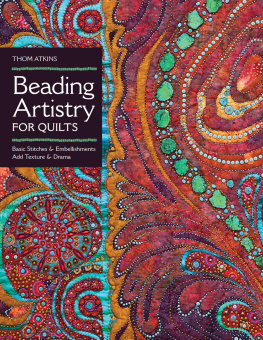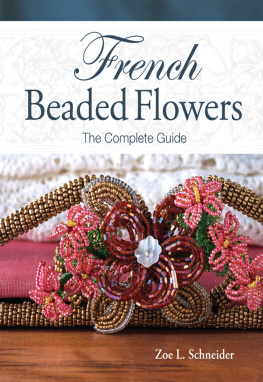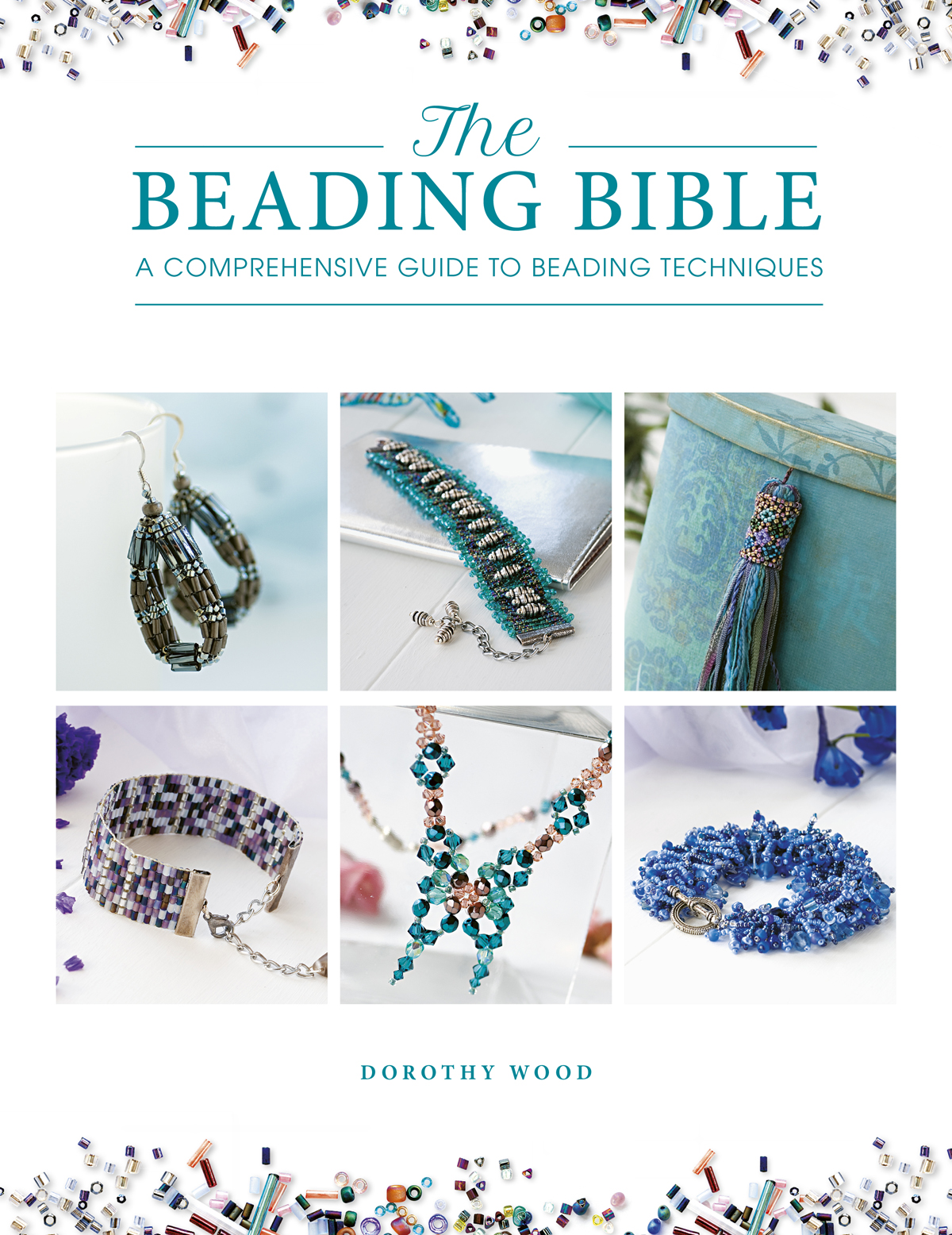Contents
Guide
Pagebreaks of the print version

The
BEADING BIBLE
A COMPREHENSIVE GUIDE TO BEADING TECHNIQUES
DOROTHY WOOD

www.davidandcharles.com

Contents
Introduction
B eads are the oldest and most widespread art form, having been used in virtually every culture since ancient times. Originally beads were worn to give an indication of social status or religious beliefs and were widely used as a currency, talisman or healing token. These early beads, made from organic materials such as bone, horn, teeth, ivory, stones, nuts, seeds, shell, wood and various plant and insect resins, are still popular today. Over the years new materials and methods of making beads have been introduced and now bead workers have a vast array of stunning beads to work with.

This stunning selection of semi-precious beads shown gives you just some idea of the huge selection available in shops and from online retailers.
Beading has also developed over the years and, even though many traditional techniques are still popular, the craft is constantly evolving and so there has never been a more exciting time to work with beads. With so many techniques, and such a vast array of beads and materials available for the contemporary bead worker, there is definitely a need for a comprehensive guide.
The Beading Bibleis just that an encyclopedia of beads and beading techniques that aims to educate and inspire anyone who loves working with beads. It is designed, in the first instance, to be a workbook with step instructions on all the basic techniques and, secondly, to be a source of ideas and inspirations giving you the opportunity to advance your skills.
Because people generally focus on one type of beading at a time the book is divided into eight chapters that cover all the traditional techniques such as bead loom weaving, jewellery and bead embroidery, as well as introducing newer techniques such as knitting and crochet with beads. Each chapter gives a good grounding in the basic techniques and shows ways to develop these skills to a more advanced level. There are inspiration pages giving you interesting ideas using the different techniques in each chapter and fabulous projects dotted throughout so that if you have the urge to Bead Something Now you will have all the necessary skills. Illustrated with step-by-step photography and diagrams to make everything as clear and easy to follow as possible, this will be the only bead book you ever need.

Beads
Walk into any bead shop and you will find a wonderful array of beads in all shapes, sizes and colours. It is worth having a good look around first to see what is available as manyshops specialise in particular types of beading; if jewellery is the main focus the shop will stock mainly large decorative beads, whereas another shop may have a wide range of smaller beads such as seed beads and bugles for loom work and off-loom bead stitches.
Choosing Beads
With such a variety of beads it can be overwhelming deciding what to buy but it is easy to narrow down your choice to make the task less daunting. As different beading techniques often use specific types of beads, once you decide what you are going to bead then the task becomes much easier. Seed beads are ideal for techniques such as bead loom weaving, off-loom weaving or ropes and cords, whereas larger beads are more suitable for wirework and threading and stringing. Learning a little about the different types of beads, how they are measured and different finishes will help you make an informed choice next time you visit the bead shop.
Beads Direct!
Although it is always a pleasure actually handpicking your beads, internet shopping is becoming increasingly popular and you will be able to find any bead you need online. The internet makes it easy to buy beads from around the world and these will be delivered to your door in a few days. Although postage is added, it is often still more economical.
LARGEBEADS
Glass
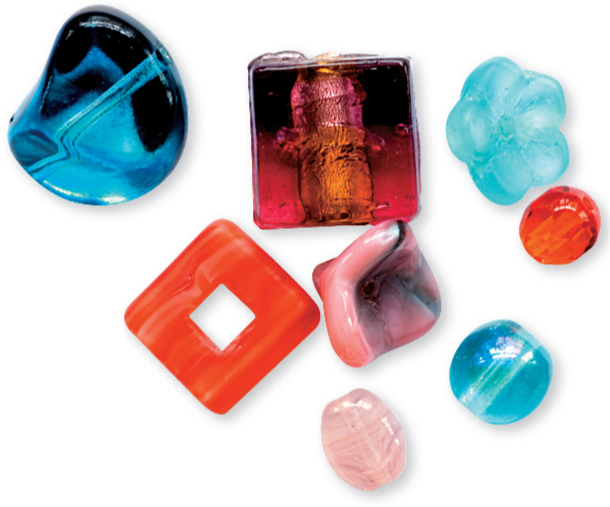
Glass is the most versatile of all the materials from which beads are made. Not only can it be made into a wide range of sizes and shapes but the variety of finishes, described on , make for endless possibilities.Pressed glassbeads are made in moulds to create lots of different shapes, from leaves and flowers to discs, cylinders and drops.Powder glassbeads, from Ghana and Nigeria, are made from recycled glass, which is ground and then fused in moulds to create beads with striped layers.Millefioribeads are made from canes of glass, in the same way as seaside rock, and then cut into slices to reveal the decorative cross section.Metallic-linedbeads are transparent beads with the holes lined in gold, silver or another metallic colour to create a beautiful sparkly effect that shines through the glass surround. The metallic lining looks a little like leaf metal and can be flecked or plain.
Lampwork
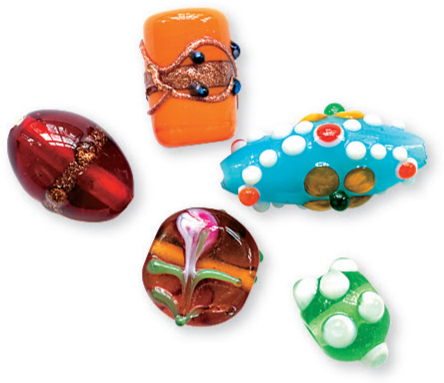
These exquisite glass beads are handmade on a workbench using a blowtorch with rods or canes of plain or patterned glass. The beads are formed around a mandrel, a revolving metal rod that determines the size of the hole. The winding process creates distinctive lines of glass wound around the outside. Whilst still soft, glass can be pressed with a ribbed tool or crumbs of glass can be sprinkled on the surface to create texture.
Crystals
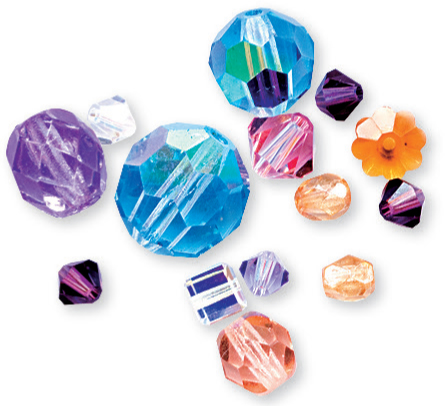
The term crystal describes a faceted bead ranging from the finest quality cut glass, such as Swarovski crystals, to inexpensive faceted glass or even moulded plastic beads. There is a huge difference in price but, as always, you get what you pay for and the more expensive crystals have a far superior shine and sparkle. Crystals are available in a wide range of colours and shapes.
Pearls
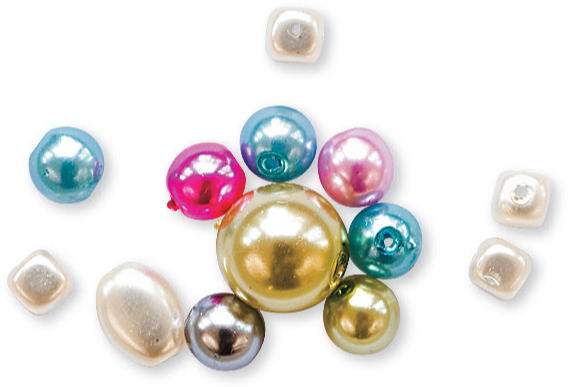



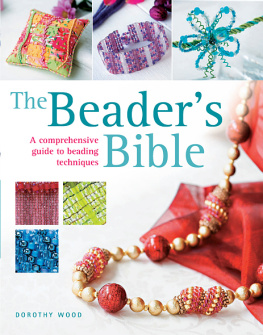
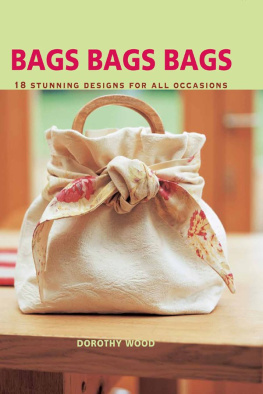
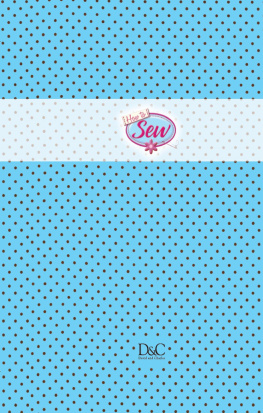
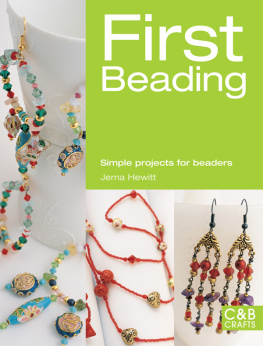
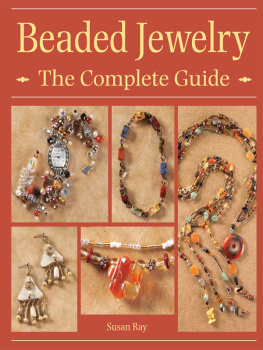

![Danielson Ethan - The beaders bible: [a comprehensive guide to beading techniques]](/uploads/posts/book/197332/thumbs/danielson-ethan-the-beader-s-bible-a.jpg)
